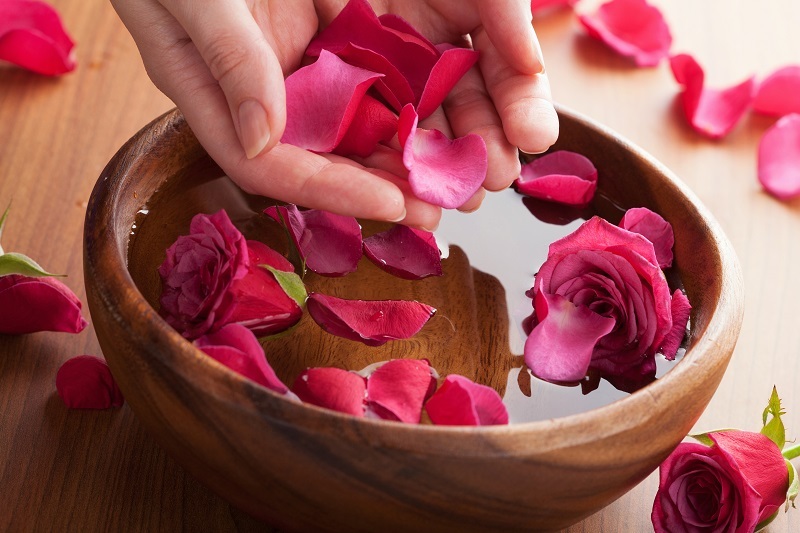Unlocking Your Birth Flower's Hidden Messages
Posted on 17/08/2025
Unlocking Your Birth Flower's Hidden Messages: A Comprehensive Guide
Discovering the world of birth flowers unveils a unique language conveyed through nature. Whether you are a passionate gardener, a lover of symbolism, or simply curious about hidden meanings, this comprehensive guide will help you unlock the messages your birth flower has been whispering for centuries.

What Are Birth Flowers? Understanding Their Significance
Every month is associated with a particular flower, each carrying its own significance and symbolism--these are what we call birth flowers. Just like birthstones, they are believed to reflect the qualities and characteristics of individuals born in their respective months. Birth flowers hold cultural, historical, and even spiritual weight, with people often using them in bouquets, gifts, and celebrations to offer unspoken sentiments.
- January: Carnation and Snowdrop
- February: Violet and Primrose
- March: Daffodil
- April: Daisy and Sweet Pea
- May: Lily of the Valley and Hawthorn
- June: Rose and Honeysuckle
- July: Larkspur and Water Lily
- August: Gladiolus and Poppy
- September: Aster and Morning Glory
- October: Marigold and Cosmos
- November: Chrysanthemum
- December: Narcissus (Paperwhite) and Holly
The Language of Flowers: Floriography and Its Origins
The language of flowers, also known as floriography, dates back to Victorian times when bouquets conveyed secret messages. People exchanged flowers to communicate sentiments that could not be spoken aloud, often due to societal restrictions. Even today, these symbols endure, adding profound depth to the simple act of giving flowers.
By understanding the subtle messages within each birth flower, you can add meaning and thoughtful intention to your gifts and personal rituals.
Birth Flowers by Month: Their Hidden Symbolism Unveiled
Now, let's delve into each birth flower's secret meanings and learn what messages they send.
January: Carnation and Snowdrop
- Carnation: Symbolizes love, fascination, and distinction. Each color adds nuance: red for deep love, white for pure affection, and pink for gratitude.
- Snowdrop: Represents hope and rebirth, signaling the end of winter and new beginnings.
February: Violet and Primrose
- Violet: Epitomizes faithfulness, wisdom, and humility. Violets are ideal for expressing loyalty and respect.
- Primrose: Associated with young love and the sentiment, "I can't live without you."
March: Daffodil
- Daffodil: An emblem of new beginnings, rebirth, and unrequited love. Giving daffodils signals encouragement and hope for the future.
April: Daisy and Sweet Pea
- Daisy: Symbolizes innocence, purity, and true love. Daisies convey cheerfulness and loyal love.
- Sweet Pea: Denotes blissful pleasure and gratitude. Also, Sweet Peas are known for bidding farewell and saying "thank you."
May: Lily of the Valley and Hawthorn
- Lily of the Valley: Expresses sweetness, humility, and a return to happiness. Ideal for apologies and reconciliations.
- Hawthorn: Symbolizes hope and supreme happiness. In ancient traditions, it was believed to bring protection and joy.
June: Rose and Honeysuckle
- Rose: Universal symbol of love, beauty, and passion. Color variations further personalize messages: red for romantic love, yellow for friendship, white for innocence, and pink for admiration or gratitude.
- Honeysuckle: Suggests devoted affection and sweet bonds of love.
July: Larkspur and Water Lily
- Larkspur: Embodies lightness, positivity, and strong attachment. Each color signifies different emotions: pink for fickleness, white for a happy nature, and purple for first love.
- Water Lily: Represents purity of heart and majesty.
August: Gladiolus and Poppy
- Gladiolus: Denotes strength of character, sincerity, and remembrance. Gladiolus show moral integrity and infatuation.
- Poppy: Associated with imagination and consolation. Red poppies also symbolize remembrance, particularly of the fallen.
September: Aster and Morning Glory
- Aster: Communicates love, wisdom, and patience. Asters are believed to attract positive energy and good luck.
- Morning Glory: Signifies affection and mortality, as it blooms and fades quickly--reminding us to treasure each moment.
October: Marigold and Cosmos
- Marigold: Symbolizes warmth, creativity, and a strong will. In some cultures, marigolds are also associated with remembrance of loved ones during Day of the Dead celebrations.
- Cosmos: Reflects harmony, peace, and modesty.
November: Chrysanthemum
- Chrysanthemum: Represents loyalty, honesty, joy, and longevity. The color of chrysanthemums can alter the message: red for love, white for truth, and yellow for unrequited love or cheerfulness.
December: Narcissus (Paperwhite) and Holly
- Narcissus: Symbolizes rebirth and new beginnings, as well as good wishes, faithfulness, and respect.
- Holly: Associated with defense and domestic happiness. Holly is a universal sign of peace and goodwill during winter celebrations.
Personal Growth and Guidance: Interpreting Your Birth Flower's Message
Your birth flower is more than a decorative element; it can serve as a personal guide, offering wisdom and insight that resonate with your journey. Here are practical ways to harness the hidden messages of your birth flower:
- Reflection: Meditate on the flower's symbolism to identify personal strengths or areas for growth.
- Creativity: Incorporate your birth flower into art, poetry, or journaling as a source of inspiration and self-expression.
- Celebration: Use your flower in birthday decorations, jewelry, or fashion to honor your unique character.
- Gift-Giving: Give your birth flower in bouquets to add a layer of meaning and thoughtfulness to your presents.
How to Incorporate Birth Flowers Into Daily Life
Home Decor and Wellness
- Floral Arrangements: Brighten your living space with fresh or dried versions of your birth flower.
- Aromatherapy: Use essential oils derived from your flower for mood-enhancing benefits.
- Natural Beauty: Infuse bath products or skincare with the essence of your birth flower for an added layer of self-care.
Symbolism in Fashion and Accessories
- Jewelry: Wear pendants, rings, or bracelets featuring your birth flower's design or image.
- Clothing Patterns: Express your unique story through prints and patterns inspired by your birth flower.
- Tattoos: Many people choose the design of their birth flower as a lifelong emblem on their bodies.
Meaningful Occasions and Rituals
- Weddings: Incorporate the birth flowers of the bride, groom, or wedding party for customized arrangements and bouquets.
- Anniversaries: Birth flowers can mark special milestones or be exchanged as heartfelt gifts on important dates.
- Remembrance Ceremonies: Use birth flowers to honor departed loved ones and celebrate their legacy.
Fun Facts and Trivia: The Secret World of Birth Flowers
- The Victorian Secret: In the 1800s, entire books were published to interpret the symbolic meaning of flowers, enabling romantic communication without words.
- Instagram Trend: #BirthFlower and #BirthFlowerTattoo have millions of posts as people celebrate this deeply personal symbolism.
- Royal Flowers: Certain birth flowers (like the Lily of the Valley) are regularly included in royal wedding bouquets, symbolizing luck and continued happiness.
- Global Twist: Did you know that in Japan, each birth flower is also assigned a traditional "Hanakotoba" meaning, adding even more layers to the hidden message?

Choosing the Perfect Birth Flower Gift: Tips and Ideas
- Personalize With Meaning: Select a bouquet or plant that matches the recipient's birth month to deliver a thoughtful, message-rich present.
- Join the Trend: Opt for birth flower jewelry, art prints, or even customized cakes adorned with floral decorations for birthdays.
- Educational Gifts: Pair a birth flower with a printed note explaining its significance. This creates a memorable gift that also educates and inspires.
Bonus: Pairing Birth Stones and Birth Flowers
For an extra-special gift, consider matching your birth flower with your birthstone. The combination of both traditions enhances the symbolic power of your gesture and brings harmony to the recipient's personal energy.
Conclusion: Embrace the Hidden Messages of Your Birth Flower
The wisdom embedded in every birth flower is waiting to be uncovered. By connecting with these time-honored symbols, you invite more intention, beauty, and meaning into your daily experiences. Whether you choose to honor your own birth flower or share its message with loved ones, you are participating in an ancient tradition--one that reaches across cultures and generations.
Are you ready to unlock your birth flower's secret language? Start by learning about your own birth flower, share its message, and watch as your relationships and self-awareness bloom.
Explore More
- Find your birth flower in our month-by-month list above
- Learn more about the Victorian language of flowers
Unlock the messages. Celebrate your story. Let your birth flower guide you!
Latest Posts
The Allure of Red Roses on Valentine's Day
Tips to Boost Orchid Growth and Vitality
Must-Send Birthday Flowers for Joy and Happiness






